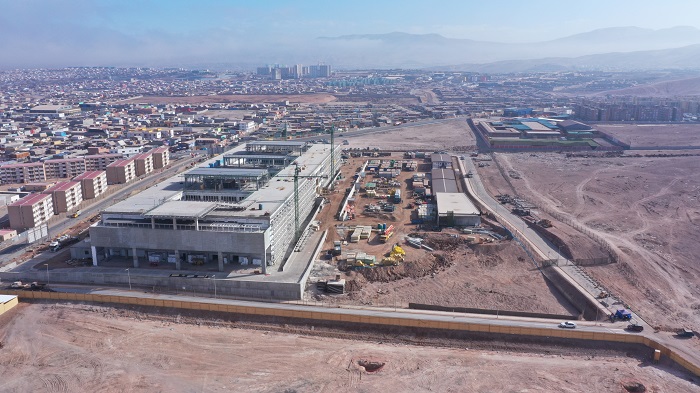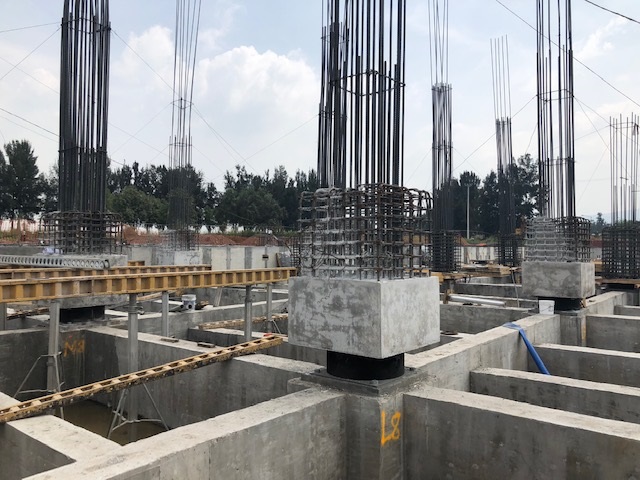We have recently confirmed once again that earthquakes are unpredictable and can cause economic losses worth billions of dollars, as well as tragic humanitarian disasters.
However, this does not mean that we cannot protect buildings and their occupants from the effects of earthquakes.
"At Sacyr, we have been designing and constructing infrastructure with seismic protection for over 10 years. The experience gained in Chile, one of the countries with the highest seismic activity in the world, has allowed us to use these techniques in other countries. In 2023, we will break a new record. We will install a total of 1,300 isolators in our ongoing building projects," explains Ramón Sanchez, Director of Building Engineering at Sacyr Engineering and Infrastructure.

Hospital del Alto Hospicio (Chile)
Seismic isolators are devices made of natural rubber that are highly deformable in the horizontal plane and absorb seismic movements from the ground without transmitting them to the superstructure.
In this way, the building remains unaffected and undamaged during and after an earthquake. This is especially important in the case of critical infrastructure such as hospitals and airports, whose proper functioning is essential for attending to the population in the event of a natural disaster, when it is most needed.
In Chile, we will install 1,000 seismic isolators in the three hospitals that we are currently designing and constructing: Sótero del Río Hospital, Cordillera Provincial Hospital, and Buin Paine Hospital. These three hospitals alone will serve a population of 3 million people.
In Peru, we will install 300 seismic isolators in the new terminal of Lima Airport, in addition to the 700 isolators installed last year. Once completed, this terminal will safely process 37 million passengers per year.

The energy released in a large magnitude earthquake is enormous, equivalent to tens of thousands of atomic bombs. That is why it is not surprising that the occurrence of these earthquakes can modify the landscape for kilometers from its epicenter or even reconfigure the coastal layout of a continent.